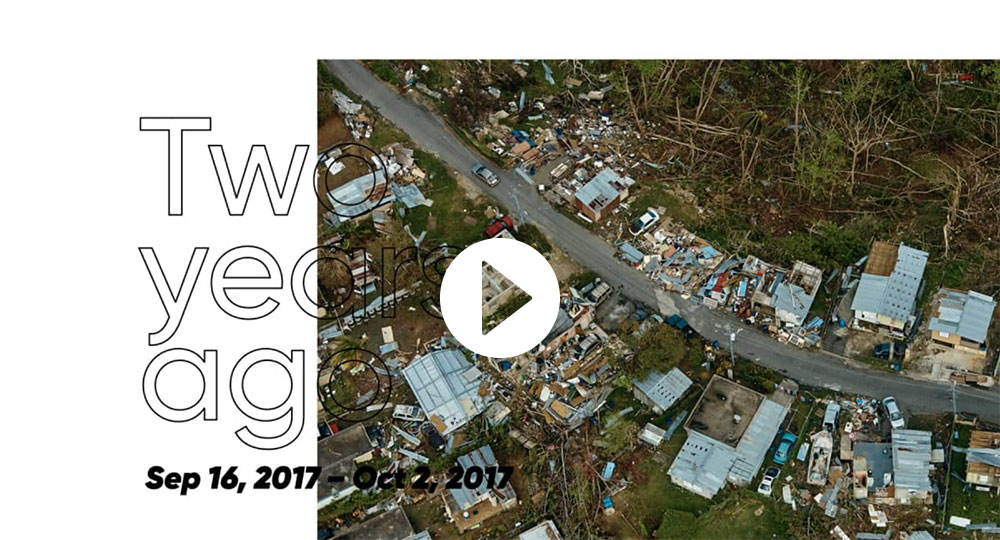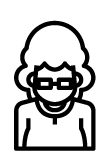Act – Ready – Connect
A system for fast relocation during natural disasters. Helping communities become more resilient.
Climate change has increased the number and the intensity of natural disasters. According with the World Health Organization, every year, natural disasters kill around 90,000 people and affect close to 160 million people worldwide.
My role:
I led the UX and UI. I worked with a PM driving the viability of the product and an engineer. I was responsible for strategy and execution. I contributed designing and conducting research, made journey maps, identified pain points and designed concepts and validated with users and stake holders. I also designed the branding and physical touch points.
Research
To better understand this scenario, we conducted research in Puerto Rico, as the island was recovering from Hurricane Maria, a devastating natural disaster that hit the island in September of 2017. We interviewed victims, local and state authorities, and NGOs.


Personas
Judy 76 years old
Librarian that works in San Juan. She was diagnosed with diabetes when she was a teenager and since then, has struggled a lot to stay healthy. 12 years ago, due to high blood sugar levels, obesity, and ulcers, her right leg was amputated. Since then, she uses a wheelchair and moved to a new apartment with elevator.
Antonia 82 years old
Has lived in a nursing home in San Juan for over 10 years. She suffers from glaucoma and kidney problems. Her family is from the town of Naranjito and they were greatly affected by the hurricane so they could not take care of her after the hurricane. Thus, she had to stay on an emergency shelter for 2 weeks before being relocated to a new nursing home.
John 78 years old
Retired high school teacher that relocated from San Sebastian to San Jose after the hurricane. He survived adenocarcinoma lung cancer and lives by himself. He cannot afford an in-home health caregiver, but a couple of neighbors help him with grocery shopping.
Natural disasters of this magnitude are chaotic scenarios and responding with the appropriate tools is a real challenge. In the case of Hurricane Maria, access to some areas was specially difficult and government and NGOs assistant took longer than expected. As a result, vulnerable communities were significantly affected and more than 3,000 people lost their lives. We collected data that revealed some of the system’s flaws.
Interview Notes
“I live in the countryside and I don’t have good internet connection, so I can’t rely on phone alerts, information, and help during emergencies.”
“During and after the hurricane I got to meet other residents from my community that I did not know before. We all helped each other. I am a pretty lonely person, but in times of crisis you really appreciate having someone else to count on.”
“I am a nurse and I take care of an 86-year-old lady with very limited mobility. When the hurricane started, I had to bring my family in so we could all stay together and take care of her. I worry about what will happen to her if I am not around.”
“I wish I was more prepared and had the information needed to take good care of myself during the last hurricane. I did not know what to do, who to call, or where to go. I panicked.”
“This last hurricane taught me that it is not enough to wait for others to help you during an emergency. The help and food eventually arrives, but we could be more prepared as a community to provide immediate support for each other.”
Pain Points
Digital Products Barriers
- 30% of users don’t have smart phone.
- 40% of users have data plan.
- When disasters take place, communications can be affected.
The most vulnerable need extra help
- 10% of people living in natural disaster prompt areas use a medical devices.
- In the US 18% of people have serious difficulties walking or climbing stairs.
Users lack of preparation
- 80% of the victims we interviewed didn’t do any kind of preparation prior to the hurricane.
Act – Ready – Connect. We leverage technology and human power to strengthen communities and help them become more resilient to natural disasters. We train our members, help them get ready, and connect people with a free place to stay in times of need.
Community Engagement in Disaster Preparedness and Recovery
Learning kids for the elderly, people with disabilities, and people with medical devices:
- Tools to be prepare for natural disasters
- Services that are cater to senior in these segments
- Off line systems for community building and preparedness























